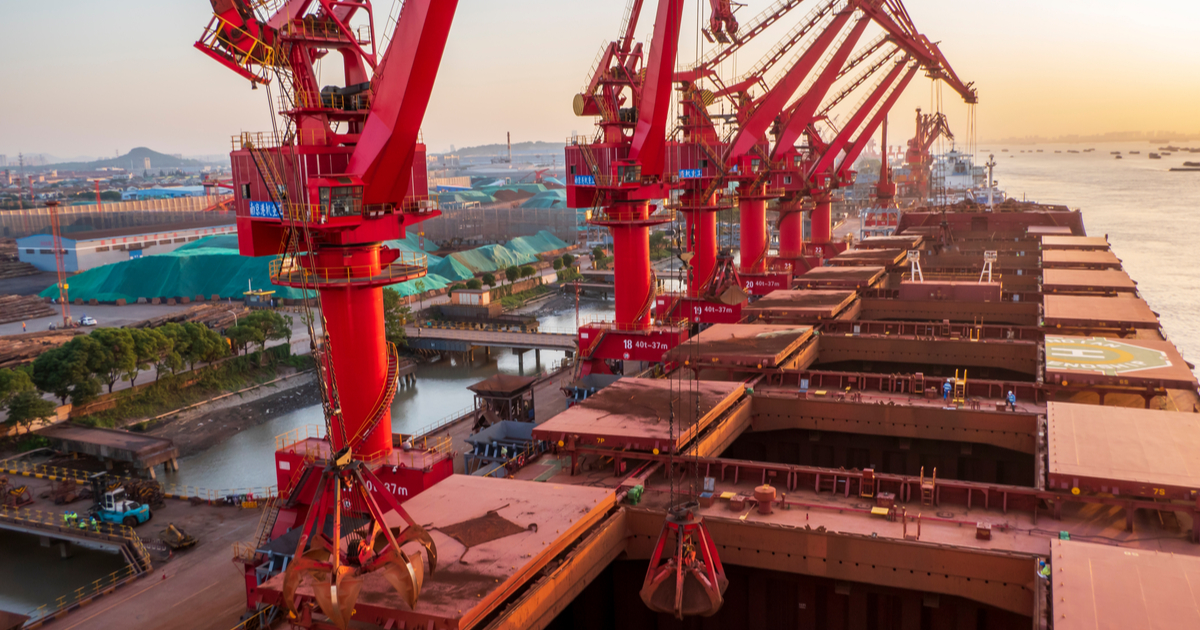
News Global Market iron ore 1856 11 April 2022
In Q1 iron ore supply weakened in Brazil due to monsoon season, and after Russia's invasion of Ukraine
China’s iron ore import losses will continue to counterweight to global price rise in Q2, 2022, after steepening in Q1, concluded S&P Global Platts.
According to S&P Global Platts, seaborne iron ore prices in Q1 were stroked by expansionary Chinese fiscal, and monetary policies. Meanwhile, portside prices in the country were lagged in the country due to low physical steel demand.
The 62% Fe iron ore Index (IODEX) rose 32% in Q1 to $158.30/dmt March 31, as positive policy signals in China supported expectations for strong demand recovery for steel, iron ore.
However, iron ore supply in Q1 weakened, particularly in Brazil due to wetter-than-usual monsoon season, also after Russia’s invasion of Ukraine further tightened supply.
In February, and March price rally were interrupted by highethed market supervision, and COVID-restrictions. These concerns could resurface in Q2.
Widening import losses between the seaborne, and China portside markets suppressed the seaborne buying interests in Q1 as Chinese buyers looked for cheaper alternatives.
According to S&P Global Platts Insights, Rio Tinto, and Vale cut down on spot supply in Q1, while BHP’s spot supply stayed stable. The secondary market, where there are deals without mining companies, in January, and February also saw subdued liquidity. Anyway, in March seaborne demand for PBF, the most liquidity traded iron ore brand, showed sights of recovery in the secondary, and primary markets as well, as steel production in China recovered, as winter production restrictions easened along with low with low inventories at Chinese mills.
Heightened seaborne price uncertainty due to the divergence between seaborne, and portside prices in Q1 saw buyers, and sellers increasingly preferred fluctuating prices for cargoes due to potential price downside.
For iron ore brands, equally commonly prices on a fixed, and floating in the spot market, BHP, and Vale increased sales on floating basis in Q1, when Rio Tinto sold spot PBF 100% on a fixed-price basis. However, most of Rio Tinto spot PBF cargoes were sold in January before widening import losses.
As a reminder, the S&P GSCI Commodity Index, a global barometer of commodity prices, rose by 29% in January-March 2022, demonstrating the higher quarterly rise since 1990. The prices of many metals also rose to a maximum – aluminum, copper, nickel, and palladium.
JPMorgan forecasts a 40% surge of commodities should boost allocations to raw materials at the time of inflation.
The Russian Federation’s invasion of Ukraine had a major impact on commodity markets, pushing prices to record highs. In particular, it concerns prices for nickel, oil, and wheat. It provoked increased global inflation, and corresponding restrictions from the US Federal Reserve, which prompted a reallocation of assets.




